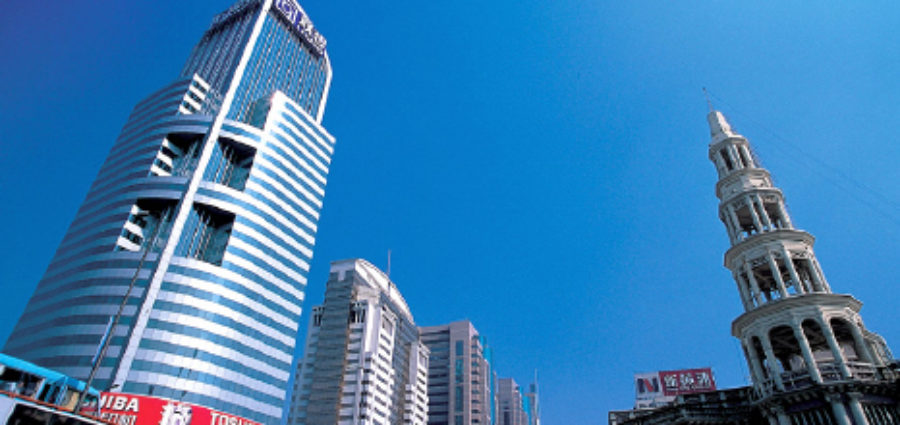Answer: Probably not. The Chinese authorities are as aware of recent history as anyone else.
In a recent edition of The Dismal Optimist, it was argued that in 2009 a “wall of money” had been pushing up Chinese and Hong Kong real estate and equity prices. This has now become conventional wisdom. In the case of China, enormous government ordered increases in bank loans have been the driving force. In the case of Hong Kong the monetary base has doubled year over year thanks to the mechanics of the Hong Kong/US dollar peg which required the Hong Kong Monetary Authority (HKMA) to buy significant quantities of US dollars.
In fact, market participants have all become China bank loan watchers, much as thirty years ago US money market participants watched the weekly squiggles in the US money supply. Now the big worry for the Chinese and Hong Kong markets is whether and how much Chinese authorities will slow down bank lending. Fears of such a slowdown have brought a recent correction in the Shanghai and Hong Kong stock markets. Market participants have hung on every word of pronouncements made by the heads of the four major government controlled Chinese banks as well as the head of the central bank. Chinese officials have become worried that the recent surge in bank lending will bring about a big rise in non-performing bank loans and create a bubble in the equity and property markets.
In my opinion the Chinese authorities will keep one foot on the gas, one foot on the brake for the rest of the year. They are cognizant of the risks involved in year over year growth in bank loans of 25% plus. The recent correction in the Shanghai markets is probably regarded as healthy.
But consider this: Oct 1 marks the 60th anniversary of the Chinese revolution. That’s supposed to be a happy occasion. Unemployment because of the problems of the export sector is already high. Beijing will not want anything more than a moderate correction in equity prices. Bank lending in China will slow down but will not be drastically curtailed. The equity market has recovered from extreme sell-off levels prevailing at the beginning of the year and has now reached levels that are more reasonable. The most likely forecast for Chinese equities between now and year end is probably flat.
Property markets are a more difficult to analyze in China. Good nationwide data is hard to come by and there are vast differences among regions. The average for the Sales Price Indices of Buildings in 70 Medium-Large Sized Cities, published by the National Bureau of Statistics of China, was only up by one percent yoy as of July. But fragmented evidence from major cities like Shanghai suggests recent increases of 20-30% in luxury residential projects. China and Hong Kong based developers in China, contrary to projections at the beginning of the year, are facing strong demand. Loans to Resident Sector, as published by the Peoples Bank of China, are up 27% yoy as of July with the bulk of the increase (as with Hong Kong real estate loans) coming in the last few months. Moreover, some of the loans officially made to state owned corporations are thought to have filtered into the local property markets.
Still, we should keep in mind what a full scale housing bubble looks like. In the United States years of credit expansion fueled a multiyear building boom, a massive inventory oversupply, a huge price spike, deteriorated lending standards and an over indebted consumer. A similar situation prevailed in Japan in 1985-90. Three or four months is not enough time to cook a full scale bubble. China moreover has been discouraging overinvestment in housing, especially in the luxury sector, for the past two years. Chinese authorities at least with regard to housing seem to be aware of the dangers of a runaway housing bubble. Non-residents for example are no longer allowed to purchase property.
Inventory numbers are hard to come by or to evaluate. In the US bloated inventories of empty houses have been the enemy of prices. But evaluating the housing inventory situation in China is more difficult, even if good data were available. China is not the same as the US. The future demand potential is so large. Hundreds of millions of rural people in future years will be migrating to the cities despite government efforts to slow this down. The demand on the so-called mass market level will be there sooner or later. Moreover, cultural values come into play. Upscale Chinese investors tend to view real estate like gold—a store of value in a world where paper currencies are not to be trusted and limited alternative investments exist. Carrying costs compared with the United States are very low. Taxes are levied on transactions, not property as in the US. Monthly apartment maintenance payments, with China’s labor surplus economy, are relatively low. And of course nominal interest rates currently are low as well. Again anecdotes abound in places like Shanghai about empty upscale condo projects, happily owned by investors who are holding their properties as a store of value.
A key ingredient in equity and property bubbles is massive private sector driven credit creation followed by significant credit destruction and debt deflation once the bubble is pricked. This is the essence of the Financial Instability Hypothesis, as enunciated by the late American economist Hyman Minsky. If that process has begun it is still in the early stages in China. Anecdotal reports do not convey a picture of massive deterioration in mortgage lending standards. Most of the bank borrowing has been done by State Owned Enterprises (SOEs) and apparently there is not a huge non-bank network extending credit to the private sector as there was in the US. If there is a bubble, it may turn up on a global basis in the various commodities that the SOEs are reported to be stocking up on.
Interestingly, based on conventional measures of inflation, consumer and wholesale price inflation, China at the moment is experiencing deflation. As of July, on a yoy basis China’s CPI and PPI changed by -1.8% and -8.2% respectively. Thus China’s relatively low nominal interest rates, as compared with conventional measures of inflation, are positive in real terms.
It’s the Outlook for China in 2010 That Will Count
The outlook for the Chinese stock and property markets will depend most on the performance of the Chinese economy in 2010. The performance of the economy in 2009 has been a positive surprise. Prior to the announcement of the stimulus package and with exports falling off a cliff, many analysts – myself included — were predicting that China would show a GDP growth far below its 8% target. Now however that target seems attainable in 2009. Government spending on infrastructure, the big step up in bank lending and some significant subsidies to consumers, did the trick. Unlike the American stimulus program which is partly a cover for ideologically driven environmental and other programs and is longer term in nature, the Chinese program kicked right in.
My own view has been that the infrastructure projects are constructive and will add to Chinese productivity. Within a few years, China will have nationwide highway and high speed rail systems second to none. These will not be roads to nowhere, as were built in Japan. The non-infrastructure loans to the SOEs however are of a more dubious nature. Unfortunately, prior to the economic crisis, it was the largely private export sector that was driving Chinese growth. In my opinion, the economic recovery in the US will be tepid at best. Barring some miraculous pickup in US consumer spending, the export sector cannot be a growth engine for China in 2010. Left on its own, the Chinese economy could indeed slow down in 2010.
But it won’t be left on its own. With its high savings rate and two trillion dollars in foreign reserves, China has the ability to put in another stimulus program to keep things going in 2010. Whether another government stimulus package will contribute to long run economic growth and productivity is debatable but at this point betting against the Chinese economy in 2010 looks like a bad idea. A positive surprise would be a significant reorientation of China’s private sector to fulfilling the needs of domestic consumption in areas such as health care and travel.
The singular devotion to economic growth now pervading the Chinese social and political culture cannot be overlooked. China’s 1.3 billion population sincerely wants to be rich. With the exception of Tibetan and Uyghur minority populations in its far west, China is ethnically homogeneous and not divided by racial and redistributionist disputes as is the US.
It is my view that China medium term will continue to surprise on the upside.








